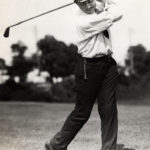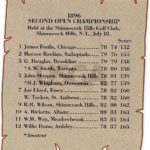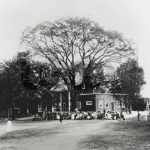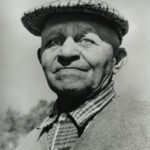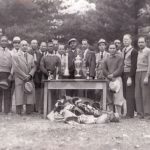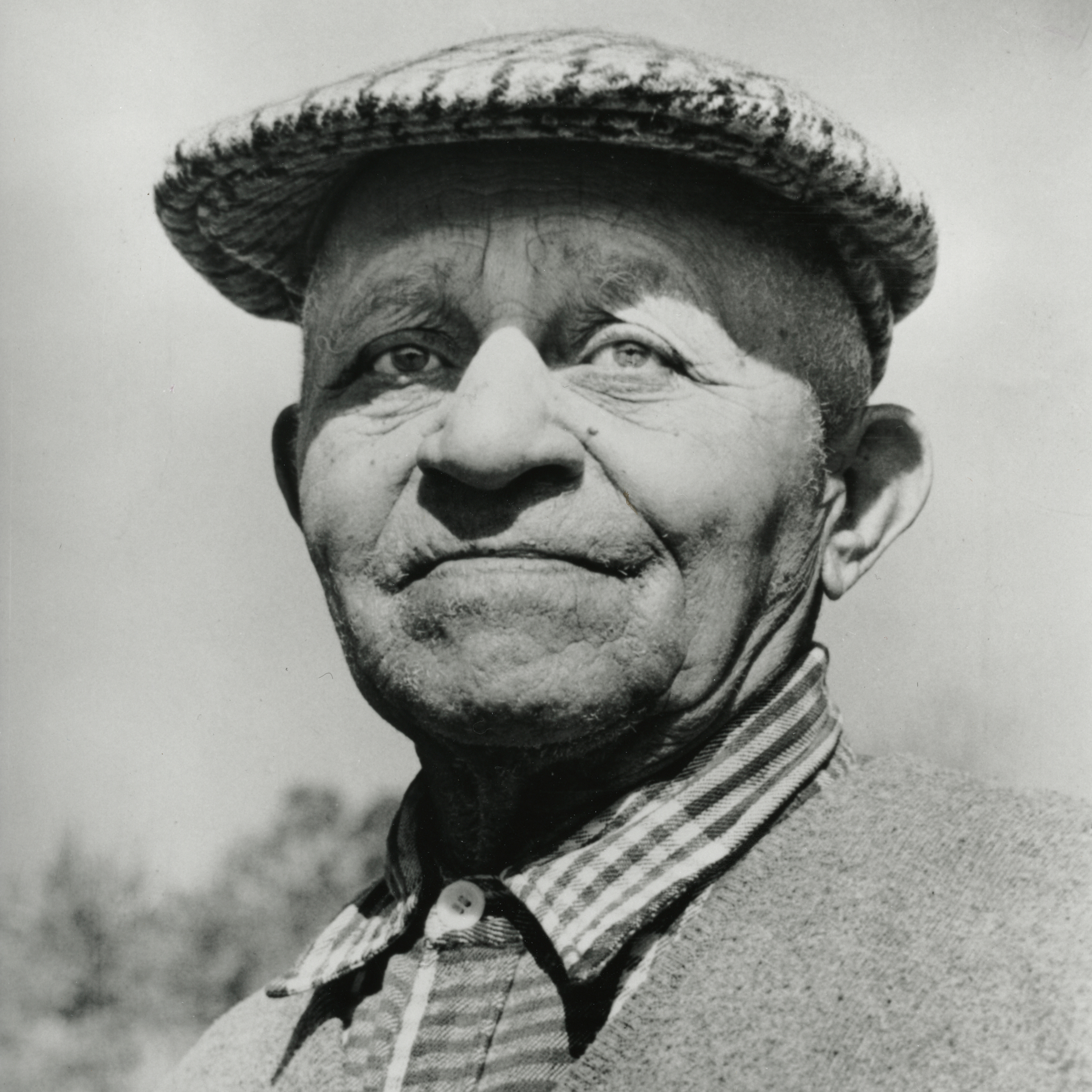
John Matthew Shippen, Jr. (2020)
About John Matthew Shippen, Jr. (2020)
The Rosedale Cemetery in Linden, N.J., is located only a few minutes from New York City, a restful oasis just across Arthur Kill from Staten Island. It is a fitting final resting place for John Shippen, the quiet former caddie who shattered societal barriers to become the first African American golf professional as well as the first American-born golf pro to compete in the U.S. Open.
John Matthew Shippen Jr. was born December 2, 1879 in Washington, D.C., to John Shippen Sr. and Eliza Spotswood Shippen. When John Jr. was nine his father, a Presbyterian minister, moved the family to the Shinnecock Indian Reservation to serve as the local clergyman. The nearby golf club that took its name from the Shinnecock Nation was still in its infancy, but it was already a powerful force in American golf, one of the founding members of the USGA. At age 14 the young John helped contribute to the family’s income by working at Shinnecock Hills, clearing brush from the course surrounds. The club’s professional, Scotsman Willie Dunn Jr. – who had hired him in the first place – recognized Shippen’s work ethic and soon expanded his duties to include caddieing, caring for the course, club repair, and scorer/starter duties for member tournaments. Dunn also began instructing him in the game; a natural athlete, Shippen had started playing on his own and quickly showed an aptitude for it. The mentoring took so well that Shippen was soon giving lessons to members at the club in addition to his other duties. Only two years later, Shippen had enough confidence in his game to enter the 1896 U.S, Open at the age of 16; Shinnecock Hills members who had been taught by the young man chipped in to pay his entry fee for the event, to be held on their home course.
The U.S. Open at the time was a far cry from the major championship that it was to become. It was not even the most prestigious national championship; that mantle belonged to the U.S. Amateur Championship. Anyone who earned a living from golf was considered a “golf professional,” including caddies and part-time instructors like Shippen. The Open was a one-day affair, with the winner determined by 36-hole stroke play. According to the USGA, there were just 58 entrants in the 1896 Open, and only three amateurs in the field including Macdonald.
Managing his game on the golf course would not be the only challenge that Shippen would face. The day before the Open was to begin, the Scottish and English professionals in the field learned that Shippen and his good friend Oscar Bunn, a member of the Shinnecock nation, were set to compete. Those professionals submitted a letter threatening to boycott the event if they had to play with people of color. The ugly revolt was brought to the attention of the first USGA president Theodore Havemeyer, a German immigrant who had made a fortune in sugar processing. Havemeyer responded with conviction to the threatening letter: “Gentlemen, you can leave or stay as you please. We are going to play this tournament tomorrow – with or without you.” The foreign contingent relented, accepting at face value a rationalization offered by Havermayer that Shippen and Bunn were Native Americans rather than “colored,” and the Open was held with both men in the field.
Shippen was paired with C.B. Macdonald, even then a powerful and imposing character in the golf world. But Shippen was not intimidated; after the first of the two rounds Shippen was tied for second place, having bested Macdonald by twelve strokes. C.B. chose to withdraw from the competition and serve only as Shippen’s scorer for the second eighteen. Shippen finished in a tie for sixth, and since two of the players ahead of him were amateurs, he received the fifth-place prize money of $10.
Shippen made golf his career and his life. He worked at several golf clubs along the East Coast, teaching many wealthy white club members such as steel magnate Henry C. Frick, diplomat and socialite James Cromwell, and former New Jersey Governor J. S. Freylinghuysen. For a time, Shippen was the greenskeeper at Macdonald’s National Golf Links in Southampton, and was part-owner of a now-defunct course he designed in Laurel, Maryland. He played in four more U.S. Opens — in 1899, 1900, 1902, and 1913 — with his best finish another tie for fifth in 1902. In the 1913 Open won by Francis Ouimet, Shippen finished far behind the leaders, but had one of only eleven rounds under par in the entire championship. Sadly, no other African American would play in the national championship until 1948, when Ted Rhodes made the field for the U.S. Open at Riviera Country Club in Los Angeles.
Shippen’s longest-lasting position was at Shady Rest Golf Course in New Jersey, the first African-American owned country club in America; it had notables such as Count Basie, Cab Calloway, and Duke Ellington among its patrons. Shippen worked there from 1932 to his retirement in 1964. As was the case at his previous stops, Shippen did it all at Shady Rest, serving as head pro, greenskeeper, tournament director, and club maker. Shippen died of natural causes on or about May 15, 1968 (sources vary on the exact date), at the age of 88 in a nursing home in Newark and was buried in the Rosedale Cemetery in Linden. During his lifetime he was never accepted for membership in the PGA of America, which didn’t rescind its Caucasians-only clause until 1961. But in 2009, when the organization granted posthumous membership to a group of African American professionals who had been denied the opportunity, the list was headed by John Shippen. He has been recognized by a number of organizations for his pioneering role in the game, with induction into the Caddies Hall of Fame and the African American Golf Hall of Fame.
Shippen is remembered for his pioneering spirt, his excellence in all facets of golf, and his enduring passion for the game. But perhaps the most remarkable thing about John Shippen was his humility. When the U.S. Open returned to Shinnecock Hills in 1986, the broadcast included a feature about Shippen and his contributions to golf history. For many of the members at Shippen’s Shady Rest Golf Course, it was the first time that they heard that the quiet diminutive pro they remembered was in fact a giant.
Photos Courtesy USGA.
From the East End of Long Island to New Jersey…
John Shippen grew up on the Shinnecock Indian Reserve and learned the game at nearby Shinnecock Hills Golf Club, where he was the first non-white competitor in the 1896 U.S. Open. He later moved to New Jersey and the Shady Rest Country Club, where he worked from 1932 until his retirement in 1964.
ADDITIONAL DETAILS & MULTIMEDIA
Life Events
- Date of Birth: December 2, 1879
- Date of Death: May 20, 1968 (aged 88)
- Year Turned Professional: 1897 (Age 18 )
- Hometown: Washington, DC
- Club Affiliation: Shinnecock Hills Country Club
Achievements
- Earned the title of “America’s First Professional Golfer”
- Competed in 5 U.S.Opens
- In 2009, the PGA of America granted posthumous membership

